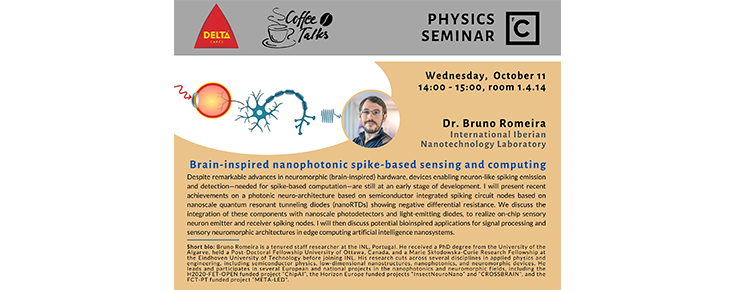
Por Bruno Romeira (International Iberian Nanotechnology Laboratory, Braga, Portugal).
Despite remarkable advances in neuromorphic (brain-inspired) hardware, devices enabling neuron-like spiking emission and detection - needed for spike-based computation - are still at an early stage of development. I will present recent achievements on a photonic neuro-architecture based on semiconductor integrated spiking circuit nodes based on nanoscale quantum resonant tunneling diodes (nanoRTDs) showing negative differential resistance. We discuss the integration of these components with nanoscale photodetectors and light-emitting diodes, to realize on-chip sensory neuron emitter and receiver spiking nodes. I will then discuss potential bioinspired applications for signal processing and sensory neuromorphic architectures in edge computing artificial intelligence nanosystems.
Short bio: Bruno Romeira is a tenured staff researcher at the International Iberian Nanotechnology Laboratory (INL), Portugal. He received a PhD degree from the University of the Algarve, Portugal, held a Post-Doctoral Fellowship University of Ottawa, Canada, and a Marie Skłodowska-Curie Research Fellowship at the Eindhoven University of Technology before joining INL. His research cuts across several disciplines in applied physics and engineering, including semiconductor physics, low-dimensional nanostructures, nanophotonics, and neuromorphic devices. He leads and participates in several European and national projects in the nanophotonics and neuromorphic fields, including the H2020-FET-OPEN funded project “ChipAI”, the Horizon Europe funded projects “InsectNeuroNano” and “CROSSBRAIN”, and the FCT-PT funded project “META-LED”.

